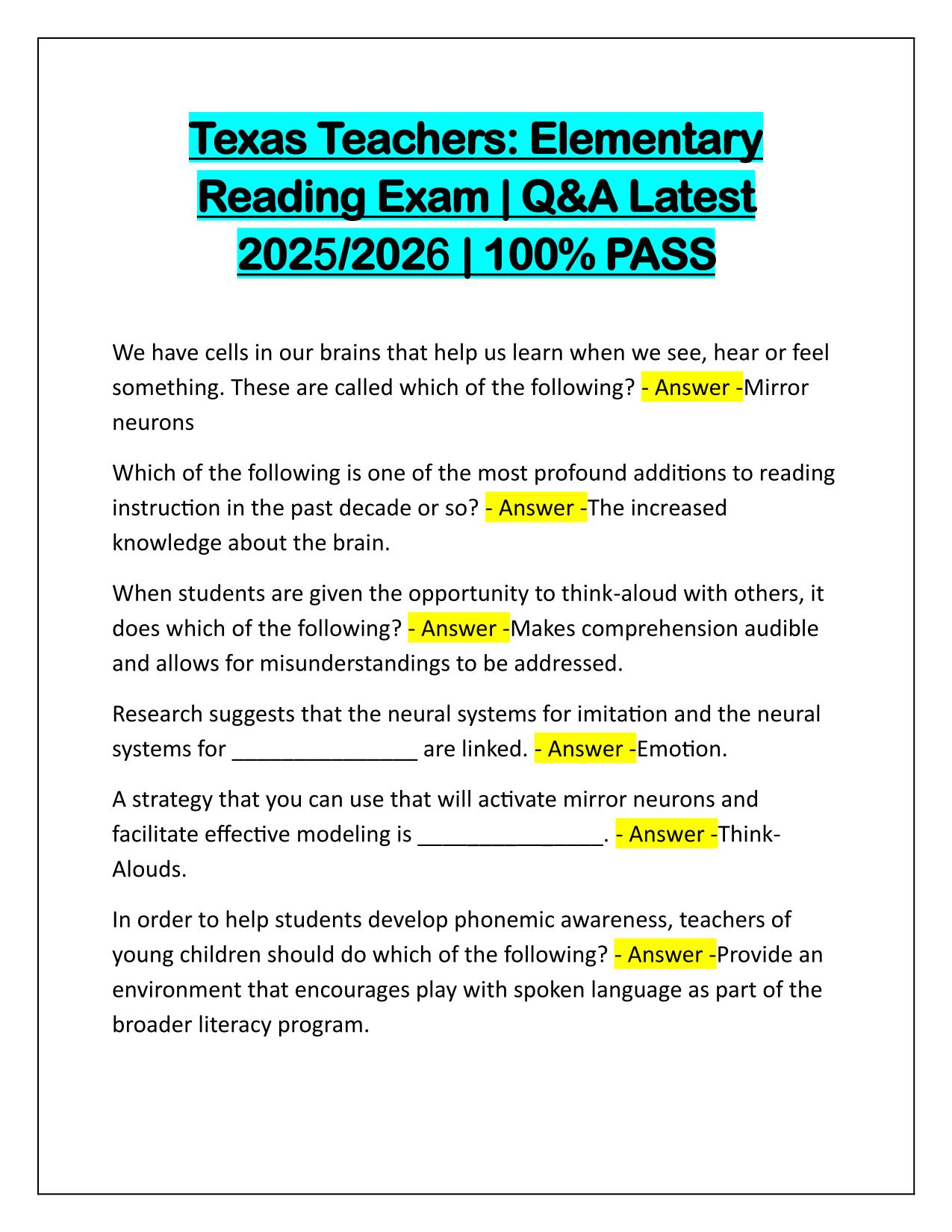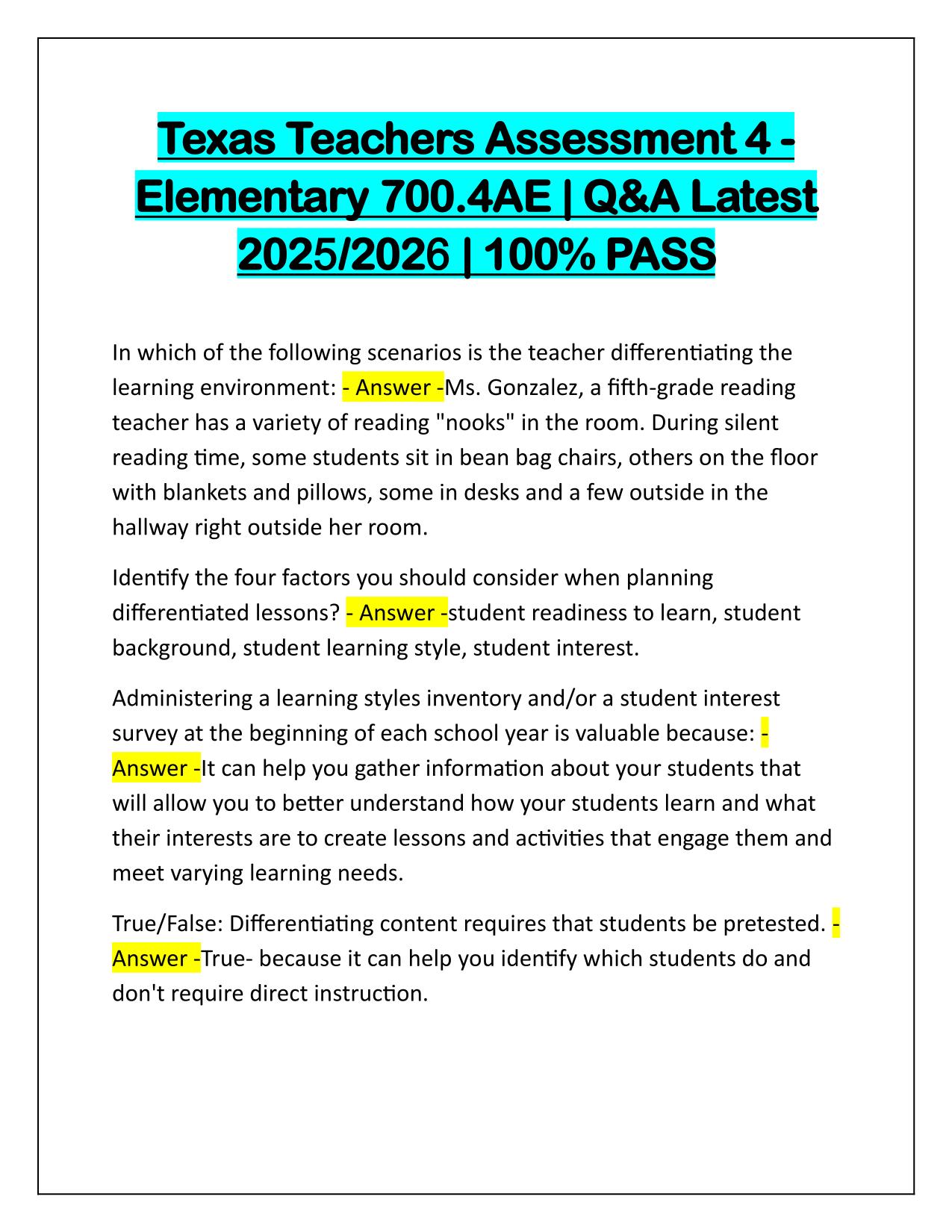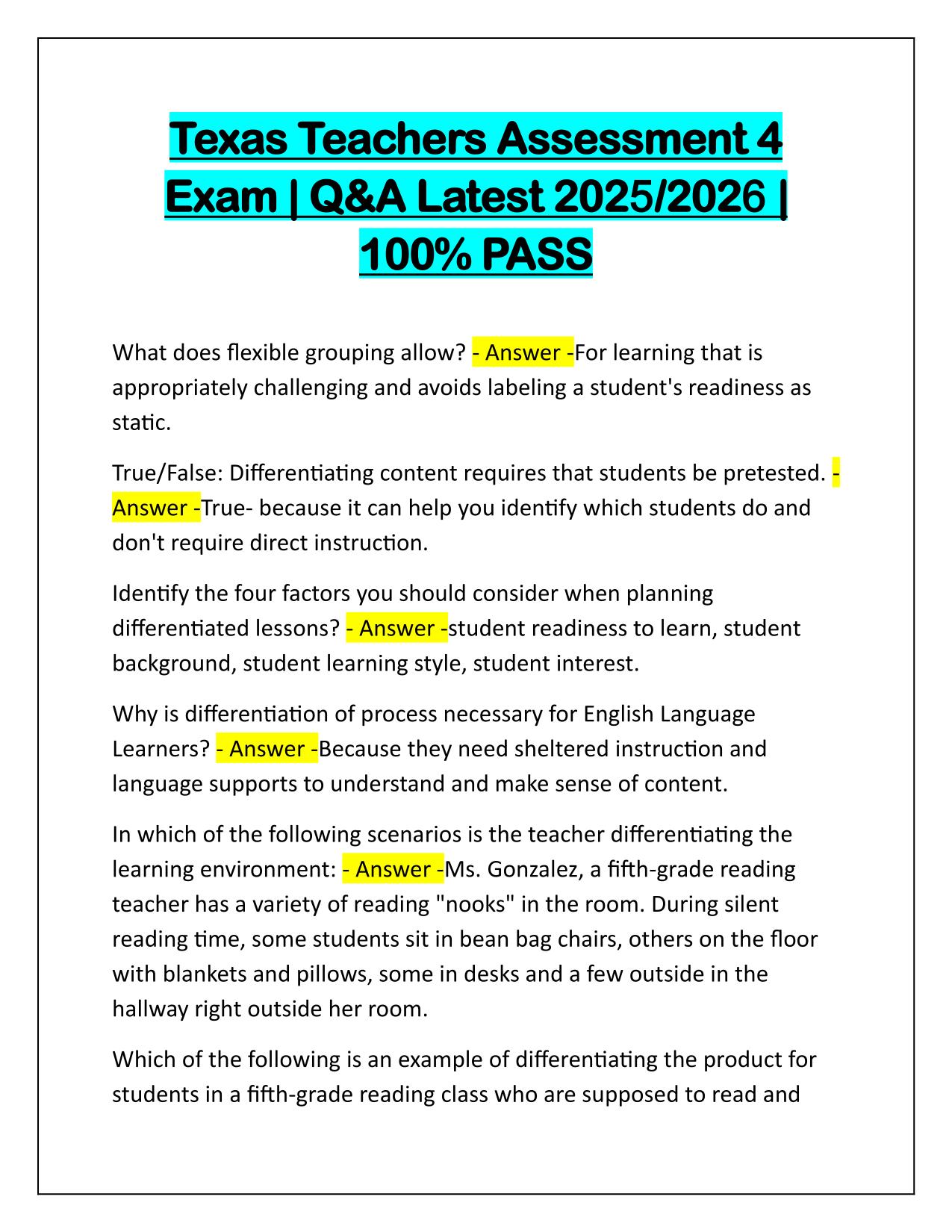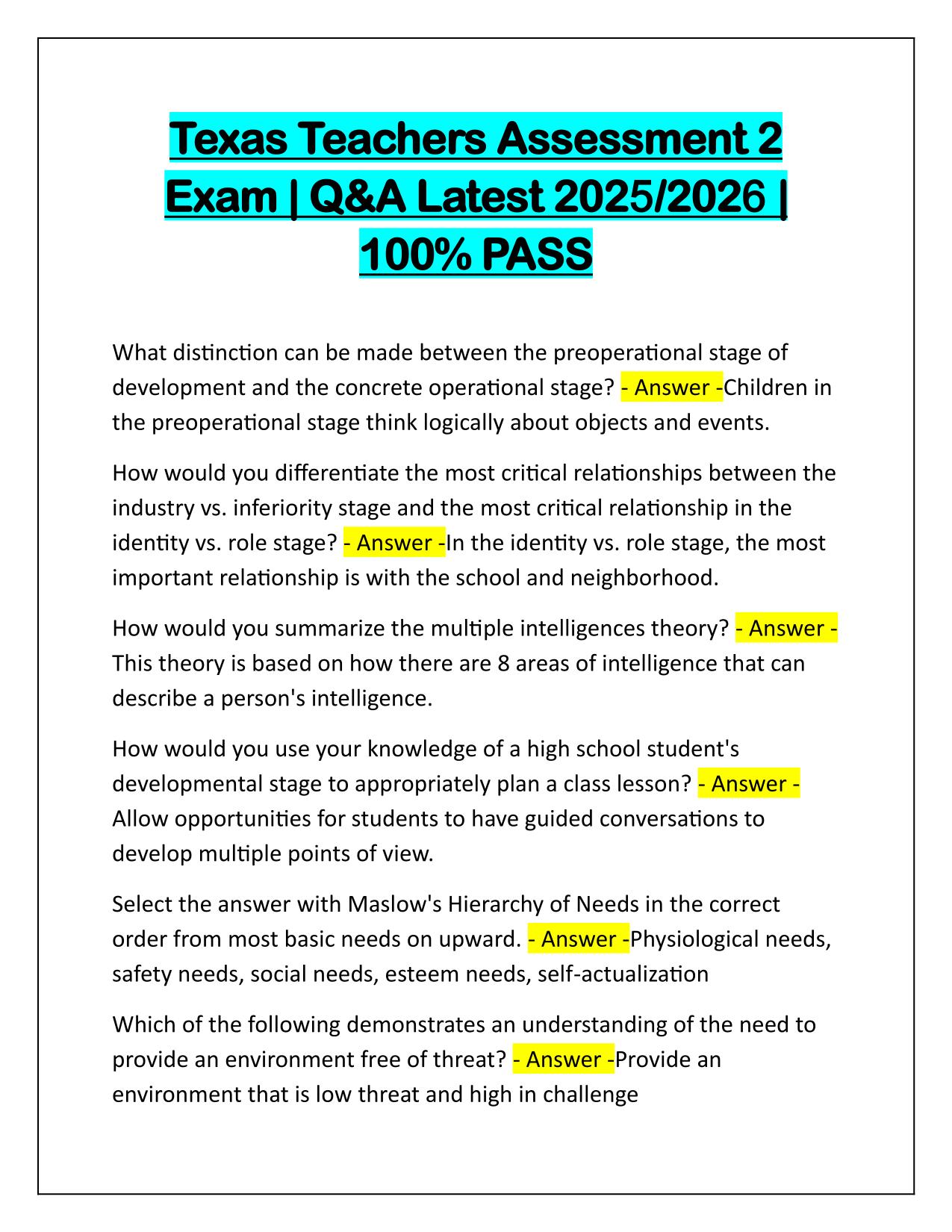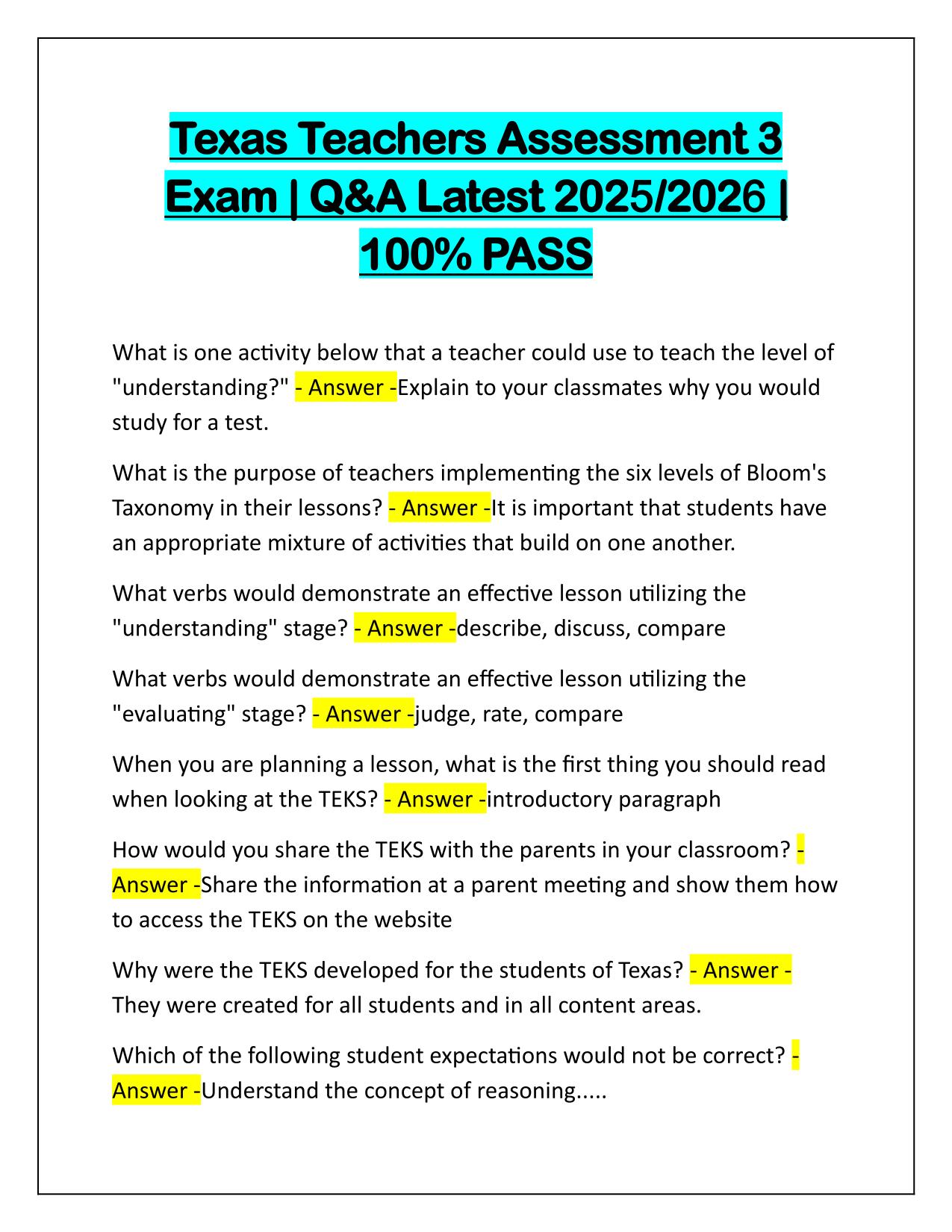Texas Teachers Elementary Reading Exam Correctly Answered Latest 2025-2026
Course:
Texas Teachers
Institution:
Texas Teachers
Texas Teachers Elementary Reading Exam Correctly Answered Latest 2025-2026
After purchase, you get:
✅ Instant PDF Download
✅ Verified answer explanations
✅ Refund if not Satisfied
✅ Prepared for 2025/2026 test cycle
Document Information
| Uploaded on: | May 1, 2025 |
| Last updated: | May 2, 2025 |
| Number of pages: | 5 |
| Written in: | 2025/2026 |
| Type: | Exam (elaborations) |
| Contains: | Questions & Answers |
| Tags: | Texas Teachers Elementary Reading Exam Correctly Answered Latest 2025-2026 |
Seller Information

AdelineJean
User Reviews (0)
Exam (Elaborations)
$7.00
Bundle Deal! Get all 15 docs for just $29.99
Add to Cart
100% satisfaction guarantee
Refund Upon dissatisfaction
Immediately available after purchase
Available in Both online and PDF
$7.00
| 0 sold
Related Documents
Available in a Bundle
Content Preview
Texas Teachers: Elementary Reading Exam | Q&A Latest 2025/2026 | 100% PASS We have cells in our brains that help us learn when we see, hear or feel something. These are called which of the following? - Answer -Mirror neurons Which of the following is one of the most profound additions to reading instruction in the past decade or so? - Answer -The increased knowledge about the brain. When students are given the opportunity to think-aloud with others, it does which of the following? - Answer -Makes comprehension audible and allows for misunderstandings to be addressed. Research suggests that the neural systems for imitation and the neural systems for _______________ are linked. - Answer -Emotion. A strategy that you can use that will activate mirror neurons and facilitate effective modeling is _______________. - Answer -ThinkAlouds. In order to help students develop phonemic awareness, teachers of young children should do which of the following? - Answer -Provide an environment that encourages play with spoken language as part of the broader literacy program.
